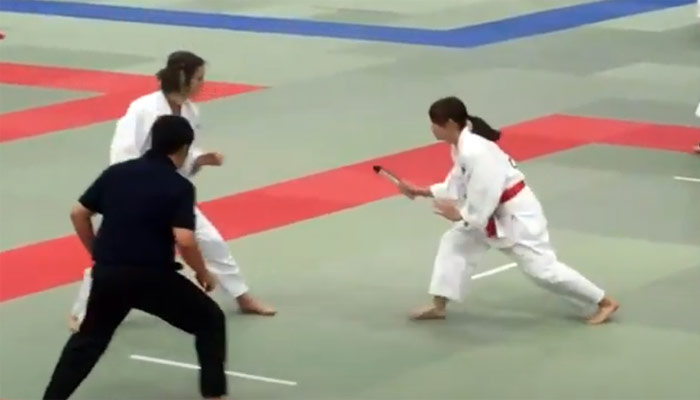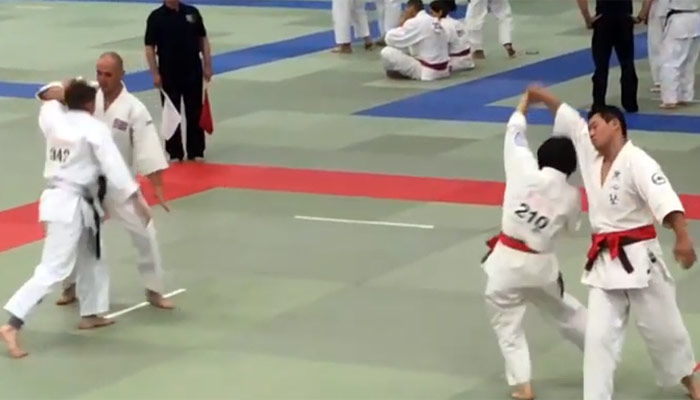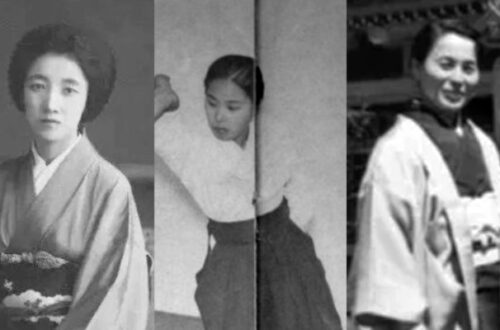
Kenji Tomiki and his Vision of Competitive Aikido
Kenji Tomiki 富木 謙治 was a scholar and a prominent martial artist who held an 8th dan in both Judo and Aikido. He was an early student of Morihei Ueshiba and played a crucial role in the development of Aikido and the establishment of Shodokan Aikido 昭道館合気道, also known as Tomiki Aikido.
Born on March 15, 1900, in Kakunodate 角館町, Akita Prefecture 秋田県, Japan, Tomiki started training in Judo when he was about 10 years old and obtained his shodan rank in 1919. He continued to practice Judo and only in 1926, he was introduced to Morihei Ueshiba by his friend Hidetaro Mishimura, and started training in Aikido (still known as Daito Ryu Aiki Jujutsu 大東流合気柔術) with Ueshiba in Ayabe in 1928. That same year, he was awarded 5th dan in Kodokan 講道館 Judo. Ueshiba and his family moved to Tokyo in 1929, and since then, Tomiki spent his summer and winter vacations in Tokyo training under Ueshiba while working as a school teacher in Akita prefecture.
In 1934, Tomiki resigned from his teaching position and moved to Tokyo, where he became one of the senior instructors at the Kobukan 皇武館 Dojo. Two years later, he relocated to Japanese-controlled Manchuria 満州, where he worked as a martial arts instructor. In 1940, when Aikido was still known as Aiki-budo 合気武道, Ueshiba introduced the Dan ranking system, and Tomiki was awarded the first-ever 8th Dan. In 1945, during the Russian invasion of Manchuria, Tomiki was captured and sent to a Siberian concentration camp. The same year, the atomic bombs were dropped on Hiroshima 広島市 and Nagasaki 長崎市, and World War II came to an end. However, Tomiki was not repatriated to Japan until 1948. In the same year, the Ministry of Education granted permission to re-establish the teaching of Aikido. Tomiki became a senior instructor at Aikikai Hombu, and the following year, he became a professor at Waseda University 早稲田大学, where he also taught Judo while continuing to teach at Aikikai.

Randori 乱取
In 1954, Tomiki became the Head of Physical Education and Chief Instructor of the Judo Club at Waseda University. In 1958, the university approved Tomiki’s proposal to establish an official Aikido Club under certain conditions, including the development of a competitive method. This led to the creation of what is now known as competitive Aikido. The competitions are held in the form of Toshu Randori 徒手乱取 or Tanto Randori 短刀乱取. Toshu Randori is similar to Judo’s Randori, but with different rules designed for Aikido. Both competitors are empty-handed and try to execute techniques on each other. Different points are awarded for successful balance breaking, full throws, or locks. In Tanto Randori, one person attacks with a rubber knife while the defender tries to throw or joint-lock the attacker. The competitors then switch roles and repeat the process. Similar to Toshu Randori’s point scoring scheme, but points are also awarded for successful tanto strikes. In addition to Randori, there is also competition for Embu 演武, in which competing pairs are judged on their kata.

Embu 演武
Although Tomiki had great respect for his teacher Ueshiba, he did not agree with Ueshiba’s (budo) way of teaching. He felt that traditional budo was too violent and cruel for modern society and instead preferred the scientific approach of Kyogi (sportification) advocated by his Judo mentor, Jigoro Kano 嘉納治五郎. Tomiki believed that competition was necessary to measure one’s true progress, which created a rift with Aikikai because Aikido emphasizes non-competition as one of its core principles. Nevertheless, Tomiki continued to use the term Aikido to describe his art. In 1967, he opened the Shodokan Dojo in Osaka, which gave birth to the term “Shodokan Aikido”. Ten years later, in 1977, the First National Aikido Tournament was held in Osaka Castle.
In 1978, Tomiki was awarded 8th dan in Kodokan Judo. However, his health began to deteriorate, and he passed away at the age of 79 on December 25, 1979.
Author’s Note: We appreciate your readership! This article serves as a preliminary introduction to the subject matter. While we aim for accuracy, we cannot guarantee the content’s precision and it may contain elements of speculation. We strongly advise you to pursue additional research if this topic piques your interest. Begin your AikidoDiscovery adventure! 🙂




